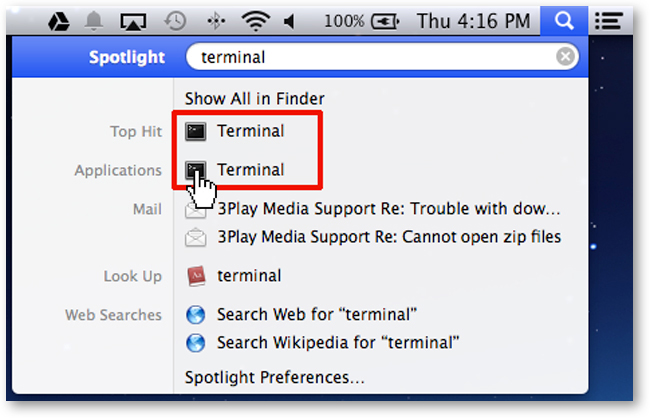
- How to use command line mac how to#
- How to use command line mac mac osx#
- How to use command line mac install#
- How to use command line mac windows#
How to use command line mac mac osx#
On Mac OSX you can access the terminal by opening the Terminal application from your Applications folder. To access the command line, we use a terminal emulator, usually called a terminal. The command line works by typing commands against a prompt, which then gets passed to the operating system of the computer that runs these commands.
How to use command line mac windows#
Just like Windows Explorer on Windows or Finder on Mac OSX it lets you navigate through the files and folders of your computer, but it is completely text based. The command line is a text interface for your computer. Now that you've got an IPFS node installed, you can start building applications and services on top of the network! Check out the Command-line- quicks start guide and jump straight to the Initialize the repository section.Introduction to the command line What is the command line? You can use mkdir -p ~/.ipfs & echo "/ip4//tcp/" > ~/.ipfs/api to avoid passing -api every time. If you're not running IPFS Desktop, specify a custom port with ipfs -api /ip4/127.0.0.1/tcp/ id in the CLI.įor example, Brave RPC API runs on port 45001, so the CLI can talk to the Brave daemon using ipfs -api /ip4/127.0.0.1/tcp/45001 id. ipfs/api file is automatically picked up.
How to use command line mac install#
If you are an IPFS Desktop user, you can install CLI tools and an. IPFS_PATH will point to a directory with the api file with the existing ipfs daemon instance. Alternatively, you can set the environment variable to IPFS_PATH.

If an $IPFS_PATH is not in the default location, use the -api command-line argument. If an $IPFS_PATH is in the default location (for example, ~/.ipfs on Linux), then it works automatically and the IPFS CLI client talks to the locally running ipfs daemon without any additional configuration. When an IPFS command is executed without parameters, the CLI client checks whether the $IPFS_PATH/api file exists and connects to the address listed there. Use the RPC API to talk to the ipfs daemon.

You can install the standalone IPFS CLI client independently and use it to talk to an IPFS Desktop node or a Brave node. It creates an $IPFS_PATH/api file with an RPC API address. The local daemon process is automatically started in the CLI with the command ipfs daemon. Here's which node to use for the local daemon or a remote client: # Local daemon The command line can detect and use any node that's running, unless it's configured to use an external binary file.

See the ipfs/go-ipfs GitHub repository for details → (opens new window) # Which node should you use with the command line It can be handy if you'd like to build a specific branch or use the bleeding-edge version of Go-IPFS. Manually compiling IPFS is a fairly involved process that changes frequently. Windowsĭownload the Windows binary from (opens new window).
How to use command line mac how to#
These steps detail how to download and install the latest go-ipfs from using the command-line. As soon as a new release of an IPFS package comes out, it is automatically shown on, so you can be sure you're getting the latest software. The IPFS team manages the website (opens new window) to help users quickly find the latest version of every IPFS package.

One can enable automatic garbage collection via -enable-gc and adjust the default maximum disk storage (opens new window) for data retrieved from other peers. A base installation takes up about 12MB of disk space. However, how much disk space your IPFS installation takes up depends on how much data you're sharing. IPFS requires 512MiB of memory and can run an IPFS node on a Raspberry Pi. Using IPFS through the command-line allows you to do everything that IPFS Desktop can do, but at a more granular level since you can specify which commands to run. This method is also useful if you're setting up a node without a user interface, usually the case with remote servers or virtual machines. Installing IPFS through the command-line is handy if you plan on building applications and services on top of an IPFS node.


 0 kommentar(er)
0 kommentar(er)
